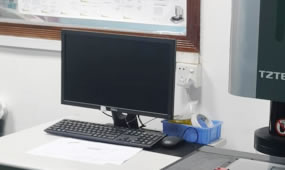MIM industry - Comparative Analysis of wax based system and polyaldehyde system
Publisher: Administrator Date:2020-11-23
1. The development of metal injection molding technology in China and the comparative analysis of wax-based system and polyaldehyde system
At present, most domestic MIM companies use wax-based systems, which is inseparable from the development of the domestic MIM industry.
Since the mid-1980s in China, the 53rd Research Institute of China Ordnance Industry, Central South University, Central Iron and Steel Research Institute and other scientific research institutions began to engage in the basic research and development of MIM. During the period, the research mainly focused on wax-based systems. Small-scale MIM companies with scientific research institutions as the main technology body have been established one after another. With the rapid launch of the MIM market, most MIM companies established before 2006 adopted wax-based systems.
The development of the polyacetal system started from the German BASF company. The CATAMOLD feed developed by it began to be promoted in the MIM industry in the 1990s. At present, most MIM companies in Europe use BASF’s CATAMOLD feed system for MIM products. Manufacturing. The polyaldehyde system is currently recognized in the industry as the most suitable MIM technology for large-scale development. However, due to the key equipment of the original polyacetal system-the catalytic debonding furnace, the early investment of imported equipment was too high, and the price of imported polyacetal feed was high, which raised the threshold for new MIM production lines, making domestic enterprises have to choose Wax-based system. However, with the development of the domestic MIM industry after 2006, JTC has been committed to the localization of polyaldehyde system for many years based on many years of practical experience in MIM technology research and development and industrialization. In 2006, it was installed in the MIM special catalytic debonding equipment. Major breakthroughs have been made in the localization of polyacetal feeding, making it possible for domestic MIM companies to upgrade their technologies on the basis of reasonable costs. After several years of practical application, JTC's TUFF series of MIM dedicated catalytic debonding furnaces have been successfully applied in many enterprises, and TUFF polyacetal feed has also been used in large quantities in the production activities of MIM enterprises. This has been completely solved in terms of the capital threshold of the investment in the MIM production line of the polyaldehyde system and the high cost of polyaldehyde feeding. (See the last section for details)
The comparison between the wax-based system and the polyaldehyde system in the domestic MIM production line is as follows:
The prerequisite for comparison: the equipment configuration of the front and back processes is based on three 120L vacuum furnaces with an annual production capacity of 20 tons and an output value of about 10 million yuan.
1. Production line equipment investment
1.1 Wax-based system: a set of mixing equipment is about 200,000 yuan, a set of extraction equipment is about 150,000 yuan (including necessary turnover tools), 6 injection machines are 700,000 yuan, and 3 sets of debonding equipment (compared with sintering equipment) 1. Production capacity) 600,000 yuan, 3 sets of sintering equipment, about 950,000 yuan, totaling about 2.6 million yuan.
1.2 Polyaldehyde system: 6 injection machines worth 700,000 yuan, 2 TUFF catalytic debonding furnaces worth 400,000 yuan (one-to-two matching with sintering equipment), 3 sintering equipment about 950,000 yuan, totaling about 2.05 million yuan.
1.3 Comparative analysis: To achieve the same production value, the equipment investment of the polyaldehyde system can be saved by more than 20%.

 Website
Website